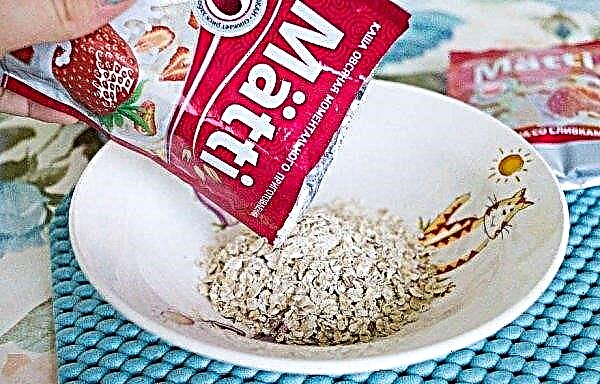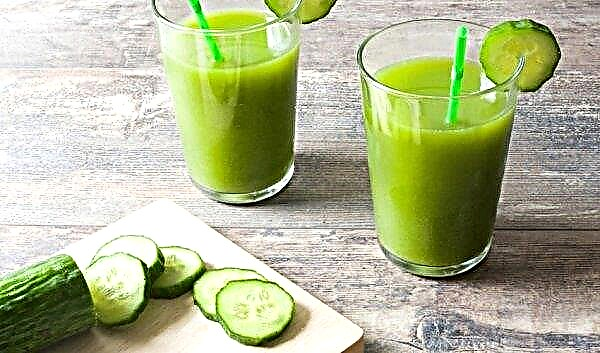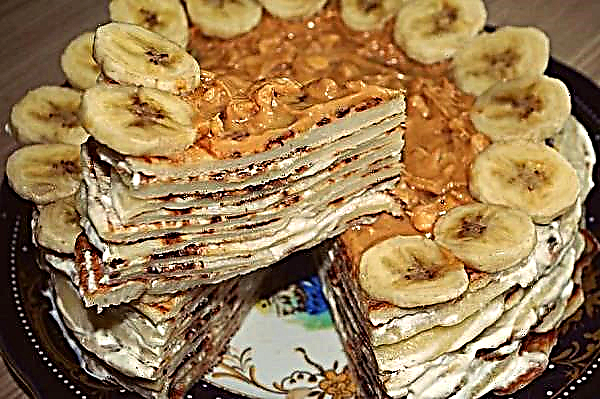For many housewives, the very idea of freezing tomatoes for the winter may seem unusual. However, in reality, these vegetables can be harvested in this way no worse than any other. True, it’s not always possible to make a salad of such tomatoes in winter, but there are many other ways to use them, in which the frozen product will not be inferior to fresh in anything. We will talk about all the secrets of tomato freezing in this review.
Is it possible to freeze tomatoes
Few people still freeze tomatoes, and in vain. This method of harvesting has several disadvantages, but it still has many more advantages. When deciding whether to stock up on tomatoes for the winter, storing them in the freezer, and how best to do this, it is important to understand well what qualities of the product will remain after thawing and which will be lost. This is where we start.
The benefits of freezing
- The advantages of tomato freezing include the following qualities:
- Speed and ease of execution: freezing does not require much effort and time, is not associated with the need to stand near a hot stove, which is especially unpleasant in the summer heat.
- Preservation of useful properties of a vegetable: during conservation, the main part of vitamins and other valuable substances contained in vegetables is irretrievably lost, while low temperatures do not lead to this effect.
- Profitability: harvesting is done at a time when seasonal vegetables are very cheap, while the price of fresh tomatoes is prohibitive in winter.
- Safety: seasonal products grown without growth stimulants and other chemical additives are frozen, which cannot be said about vegetables delivered to store shelves in winter. In addition, no preservatives are used in the preparation - salt, vinegar, sugar, etc., thus, the product remains completely natural.
- Preservation of taste and smell: with proper use of tomatoes after defrosting, dishes with them will be just as tasty and aromatic as if fresh vegetables were added to them. Winter tomatoes are practically odorless and tasteless and only in appearance look like a favorite vegetable.
- Simplicity in further use: to prepare many dishes, it is necessary to free the tomatoes from the skins, and fresh vegetables for this purpose must be blanched (immersed in boiling water for a short time). After defrosting, the skin from tomatoes is removed very easily, without additional procedures.
Did you know? The author of the technology of shock freezing products is an American named Clarence Beardsay, formerly a taxidermist. The Eskimos from the Labrador Peninsula, which Berdsay visited as part of a scientific expedition, prompted the young adventurer with a good idea. Northern residents immediately laid out the caught fish on the ice, where, under the influence of the Arctic wind, it froze in a matter of minutes. Such a product could subsequently be stored for months, and, unlike ordinary freezing, after thawing, its taste qualities did not change at all.
Minuses
- If we talk about the downsides of freezing, then they are as follows:
- After defrosting, the tomato completely loses its structure, so you can only use it for making mashed potatoes, pasta or subsequent heat treatment.
- You can only store the workpiece in a freezer, the volume of which is limited.
- Thawed product must not be re-frozen. This means that if during the winter, for example, due to power outages, the vegetables begin to thaw, all the stockpiles will be spoiled or their quality will suffer greatly.
How to freeze tomatoes for the winter in the freezer
Freezing foods is much easier than canning or even drying. All that is needed for harvesting is quality raw materials, the right utensils, a modern freezer and a clear idea of what frozen vegetables will be used for (the technology of freezing depends on the latter).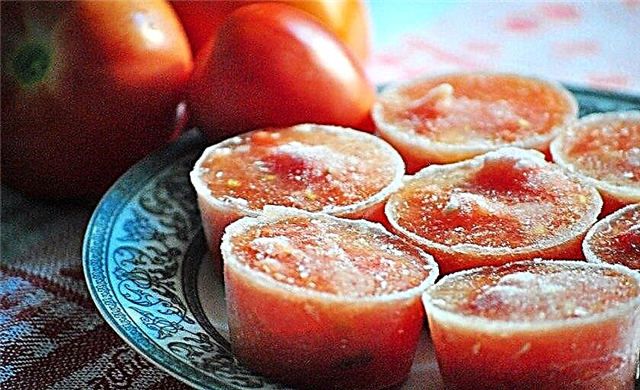
Selection of tomatoes and preparation for freezing
In principle, you can freeze any tomatoes.
But it is better to be guided by the following rules when choosing raw materials:
- Early tomatoes are not suitable for any harvesting. They contain the minimum amount of nutrients, they are designed to quickly meet the need for vitamins after winter, and for other purposes it makes no sense to use them.
- Ideal raw materials for billets are products grown in their own summer cottage or purchased from a trusted seller, who uses his vegetables not only for sale, but also for eating in his family. Modern technologies use various methods to improve the yield and external characteristics of the fruit, but, unfortunately, most of these methods adversely affect the quality and environmental safety of the goods.
- You can get the best tomato crop in the greenhouse, however, vegetables grown in the garden are more suitable for harvesting: much less nitrate accumulates in them.
- For freezing, it is preferable to select tomatoes of the same size, better than average. Fruits should not have stains, damage, signs of disease or decay. Their integrity should not be compromised.
- It is advisable to freeze fleshy varieties of tomatoes, in which the pulp is more than juice.
- For harvesting, only fully ripe, but not overripe fruits should be used.
Before processing, the tomatoes need to be washed (especially carefully this should be done with the goods purchased on the side) and let the water drain completely. The skin of the fruit must be completely dry.
Important! The less time elapses between the removal of the vegetable from the garden and its freezing, the more nutrients will be stored in the product.
What kind of kitchen equipment do you need
Depending on which method of freezing will be chosen, for work you may need:
- sharp knife;
- a blender or meat grinder;
- cutting board;
- cling film, parchment paper or foil;
- containers for freezing and storage: plastic containers with a tight-fitting lid, molds for ice, plastic bags for freezing with a special slide-lock, etc.
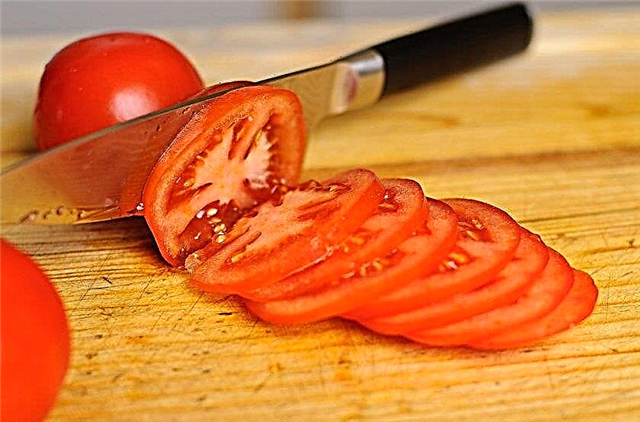
Freezing methods
It is best to freeze food in No Frost refrigerators. The super-freezing mode, if any, must be turned on at least 2 hours before placing tomatoes in the chamber. It is advisable that the temperature in the freezer by this moment be no lower than –24 ° C. There are several ways to freeze tomatoes. Each of them has a right to exist, but when choosing between them, you should first focus on a specific dish for which the vegetable will be used (for example, whole tomatoes are needed for some recipes, chopped ones for others, tomato puree for others, etc. P.).
Did you know? Classic shock freezing is only possible in an industrial environment. Modern household refrigerators have a super-freeze mode, which is the closest analogue to the “right” technology. The essence of the function is the forced shutdown of the thermostat, after which the compressor starts to work continuously, respectively, the temperature in the chamber decreases so much that the product placed in it does not freeze gradually, from the peel to the middle, but immediately and completely. Only in this case, its useful properties are preserved as much as possible.
Whole
The easiest and most sophisticated way.
Here is all you need to do:
- Fold the washed, washed and dried tomatoes in a plastic bag (you can use a regular bag without a lock, just tie it up so that the tomatoes do not accidentally spill out during the process of extracting food from the freezer).
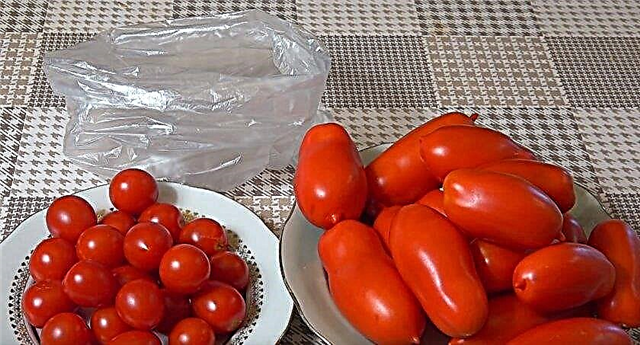
- Put the bag of tomatoes in the freezer, pre-cooled to the lowest possible temperature.

- After a few hours, making sure that the tomatoes have turned into absolutely solid balls, you can turn off the super freeze mode.

Video: whole tomato freezing
With obvious simplicity of execution, this method has other advantages. Whole frozen tomatoes are stored longer than shredded tomatoes, in addition, they do not need to be laid out in portioned containers, since the fruits are perfectly separated from each other and can be removed in such quantities as are necessary. You can cut the tomato into the required number of parts after thawing, while the peel from the vegetable will be removed by itself.
Did you know? It is estimated that when the storage temperature of frozen tomato is increased from –18 ° C to –12 ° C, the amount of ascorbic acid in the fruit decreases by 20%.
Slices without peel
This method is suitable if you need to prepare a semi-finished product for dishes that use blanched (peeled) tomatoes.
In this embodiment, the technology is somewhat more complicated:
- On each tomato (it is better to use large-fruited), make 2 cruciform shallow cuts from the side opposite to the peduncle with a sharp knife. It is advisable only to violate the integrity of the peel.
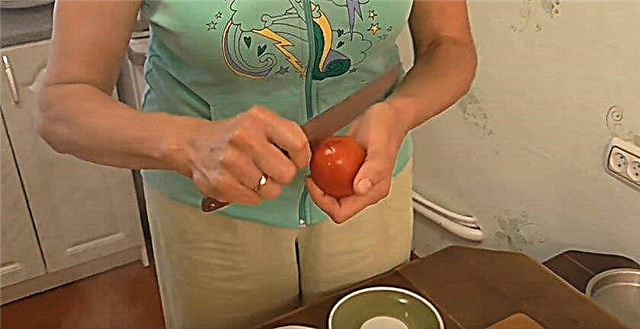
- Put the tomatoes in a deep bowl and pour boiling water.

- After 1-2 minutes, use the slotted spoon to remove the fruits and remove the skin from them (it will easily separate from the pulp).
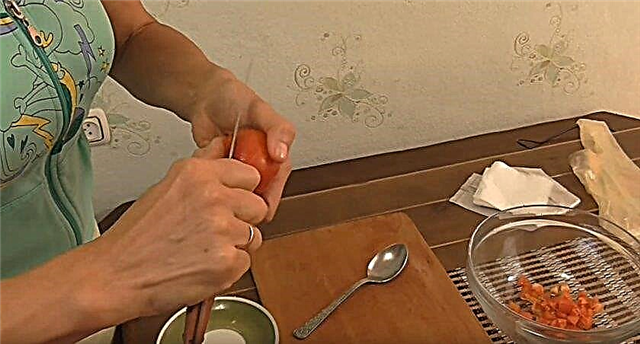
- Cut the peeled fruits into several slices.

- Put slices in 1 layer on a horizontal plane (cutting board, tray, large flat plate, etc.) pre-coated with cling film. If all the tomatoes did not fit, cover the slices with a new layer of film and lay out the second tier of fruits, if necessary, make a few more "floors". Cover the top layer with a film.
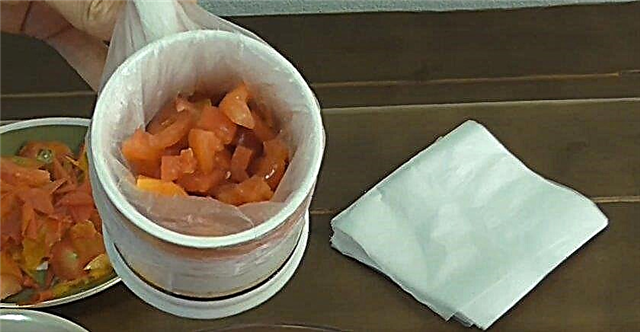
- Put the structure in the freezer, previously cooled as much as possible.
- After 10-12 hours, making sure that the vegetable is well frozen and completely solid, quickly put the slices into portion packets or other containers and send them back to the freezer, already in normal mode.
Video: peeling tomatoes without slices
Salad Pieces
If you really want to enjoy a salad of fresh tomatoes in the winter, you can try the following:
- Choose the most dense fruits of medium size, wash and dry them.
- With a sharp knife, cut each vegetable into 4-6 slices.

- Spread the slices on a tightened film plane in one layer so that the parts do not touch each other. Cover the tomatoes with another layer of film, so that during the freezing process they do not lose moisture and do not pull off odors.

- Put the plane with chopped tomatoes in the freezer for deep freezing for at least 12 hours.
- Take out the tomatoes very quickly, pack them in a more convenient container and put them in the freezer again.
Video: freezing tomatoes with slices for salad
Pizza mugs
Beautiful slices of tomatoes on pizza can be frozen in advance for the whole winter. To do this, you need:
- Select tomatoes of suitable sizes, wash and dry them.
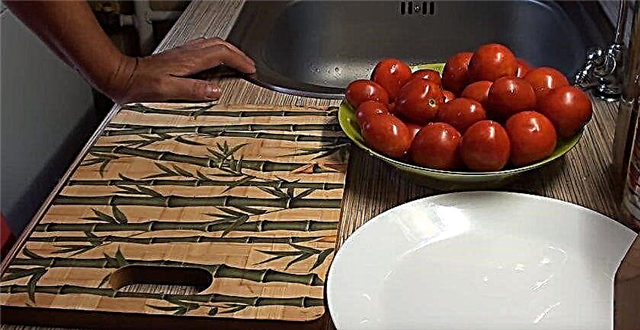
- Carefully cut off the “hat” from each tomato along with the stem.

- Cut the rest of the fruit into circles of the same thickness.
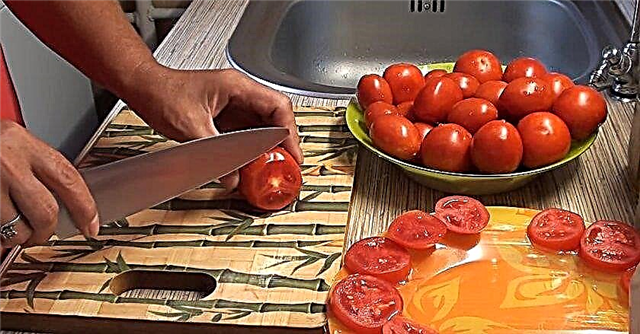
- Put circles on a flat surface covered with a film according to the technology described above.
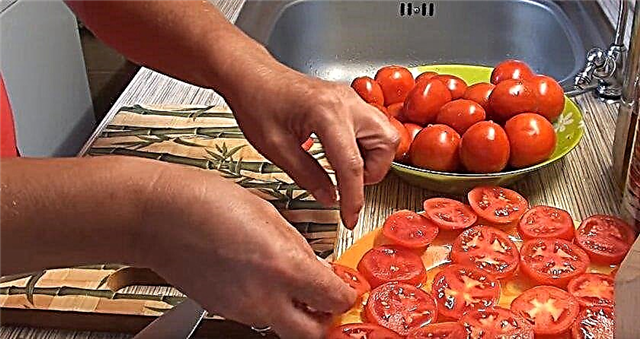
- Put a bowl of tomatoes in the freezer for quick freezing.
- After the set time (at least 12 hours) quickly, but carefully, so as not to damage the correct shape of the tomatoes, put them in bags with a slider lock or other suitable container for long-term storage and return them to the freezer.
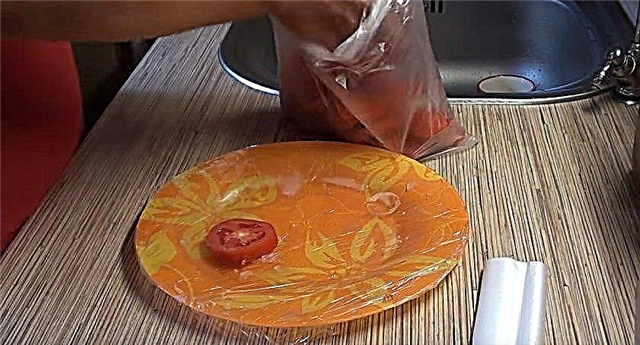
Video: pizza freezing tomatoes
Stuffed
If the options listed above concerned the preparation of ingredients for cooking, then stuffed tomatoes are a full-fledged semi-finished product, from which you can cook an original and nutritious dish in just a few minutes.
As a filler, you can use different fillings, for example:
- mushroom: Finely chop the mushrooms, fry in a mixture of vegetable and butter with onions and garlic, salt, pepper to taste;
- pumpkin: peel the pumpkin, grate it with a coarse grater, add a little grated carrots, diced onions and chopped garlic, fry until cooked, salt and pepper;
- vegetable: fry favorite vegetables or their mixtures in vegetable oil; for example, eggplant, bell peppers, onions, carrots and even cucumbers work well with tomatoes.

Technology for further action:
- Choose medium-sized round tomatoes, wash and dry them.
- With a sharp knife, cut off the “hat” from each tomato along with the stem.
- With a knife or spoon, remove part of the pulp so that a small “pot” is obtained (it is important not to damage the bottom and leave a sufficient layer of plant tissue below and on the sides, otherwise the filling will leak and burn during baking). Extracted pulp and juice can be used to freeze mashed potatoes.
- Stuff the tomatoes with minced meat.
- Place the stuffed tomatoes on a plane lined with film or parchment, cover with a film on top and send to deep freeze.
- Not earlier than 1 day later, stuffed tomatoes can be transferred to a plastic container (bags are not suitable for this purpose).
Mashed Tomato
Tomato puree is often prepared by spinning, but in this case, you must add salt, sugar, vinegar and other preservatives to the dish, otherwise the contents of the jar will ferment. Freezing allows you to save puree from tomatoes in their natural form. To make mashed potatoes, absolutely any tomato will do. Fruits with minor damage can also be used, but the dubious part should be cut first.
Did you know? Tomato puree can be made from juice and pulp, which remain in the process of preparing sun-dried tomatoes (only the petals with a thin layer of pulp on the skin are used for drying). In this case, in addition to receiving two separate dishes, the hostess gets rid of the need to blanch and peel the tomatoes.
The procurement technology is as follows:
- Peel the tomatoes from the skins, pre-fill them with boiling water.
- Cut the pulp into arbitrary parts and beat with a blender or mince.
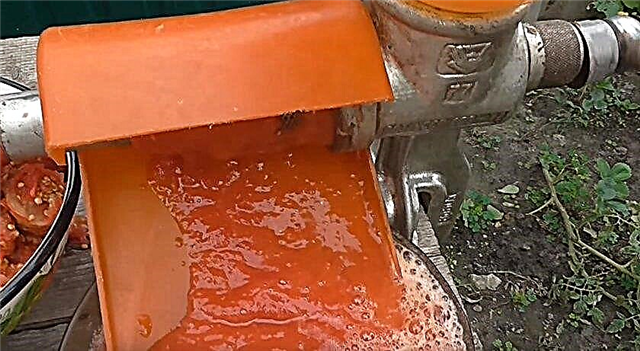
- Fill with the obtained puree portioned containers of such a volume that allows you to use its contents at a time.You can use ordinary plastic cups for these purposes, covering them with cling film and tightening with rubber, containers for making ice, etc.

- Send containers with mashed potatoes for quick freezing.
- Glasses with frozen mashed potatoes can be left for storage in their original form. It is enough to extract tomato cubes from ice-making containers and pour them into bags with fasteners, plastic containers or another suitable container.
Video: freezing tomato puree
Tomato juice
Tomato juice is frozen using the same technology as mashed potatoes. All tomatoes without exception are also suitable for this, even slightly overripe (but only, of course, not green). If the household has a juicer, then preparing juice will not be a problem. But you can do it with improvised means.
Important! You never need to defrost foods by putting them in water, much less hot.
In this case, the step-by-step instruction looks like this:
- Remove peel from tomatoes by blanching.
- Cut the pulp into small pieces and, if desired, beat in a blender or pass through a meat grinder (this will speed up the further process).
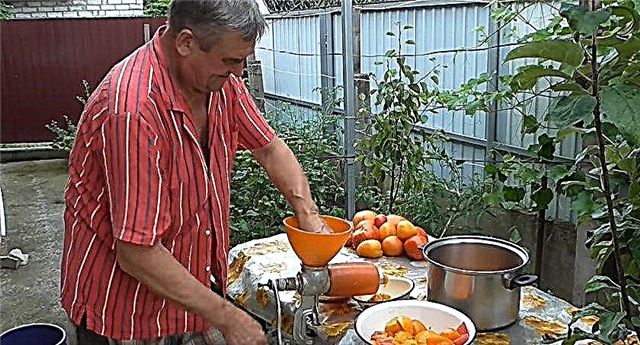
- Put slices of tomatoes or mashed potatoes in a sieve with a grid and carefully rub its contents over a saucepan or plate. The seeds and dense fragments remaining in the sieve can be used, for example, in the preparation of borsch.
- Arrange the finished juice in portioned containers and quickly freeze.

- If small molds were used for freezing, then pieces of “tomato ice” can be removed and transferred into bags or plastic containers. Larger containers are best left for permanent storage in the freezer.
Video: how to make tomato juice for the winter
Basic storage rules
Properly frozen tomatoes are stored from 10 months to 1 year, and before the ripening of a new crop they can and should be used.
However, in order for the product not to lose its qualities, both nutritious and taste, it is necessary to observe the following recommendations:
- Store food in the freezer only in closed containers. If the tomatoes were cut into pieces, such a container should, as far as possible, be airtight.
- After the product has started to thaw, it must not be frozen again.
- At the time of placing the tomato in the freezer, it should be dry, but previously washed (after defrosting, vegetables do not wash).
- Low temperatures will not make a spoiled product fresh. You can not send low-quality raw materials to the freezer.
- After shock freezing, vegetables should always be laid out in portions so that each time before use, the entire container does not have to be removed to select the required amount.
- In the case of preparation in several batches or in various ways (slices or circles, with or without peel, etc.), each package must be marked with the date of freezing and its method.
Speaking about at what temperatures it is best to store the workpiece, one should proceed from the fact that the colder it is in the chamber, the more vitamins will remain in the product. However, despite the fact that tomatoes withstand frosts to –30 ° C, maintaining such low temperatures requires significant energy costs. Therefore, it is believed that the temperature –18 ° C is the optimal condition for storing frozen vegetables.
How to defrost tomatoes
Many housewives do not attach much importance to the technology of defrosting products, and yet its observance is an extremely important condition for maintaining their nutritional value. Here you must adhere to a single fundamental rule: if you need to freeze foods as quickly as possible, then defrost - as slowly as possible. However, if you keep the tomatoes extracted from the freezer in the heat, they will turn into porridge, which should also not be allowed. To determine the best method of defrosting, one must proceed from the purpose for which the product will be used.
For example:
- Whole frozen tomatoes can be kept at room temperature for about 15 minutes, after which they will be perfectly cut into slices. However, if you plan to remove the skin from such tomatoes, it is better to let them soften completely, but put them in the saucer first, as the juice will start to flow out as they thaw.
- Pizza mugs are not thawed at all, but simply spread on the workpiece immediately before sending it to the oven. Only in this way can the tomatoes be kept round and not let them release all the juice.
- Mashed potatoes and juices can not be thawed if they are used for making soups. But if the product must be mixed with cold ingredients, it must be completely thawed.
- Tomatoes are added to salads in partially thawed form and only before serving.
Traditionally, 3 possible methods are used to defrost vegetables:
- A microwave oven, defrosting mode is the fastest and, according to many experts, the most effective in terms of preserving the taste and useful properties.
- The bottom shelf of the refrigerator is more suitable for meat or fish, but can also be used if you need to bring tomato juice or mashed potatoes to a liquid state in the morning.
- Room temperature. Suitable for partial thawing of tomatoes frozen whole or in slices. The process is fast enough, so tomatoes do not have time to lose a lot of nutrients.
How to use frozen tomatoes at home
In short, frozen tomatoes can be used to prepare any dishes in which tomatoes are cooked or chopped to a puree state. In fact, this means that the only restriction on the use of thawed vegetables concerns the ability to make a salad out of it or eat whole.
Without the addition of tomatoes, grated or cut into pieces, it is impossible to imagine a huge number of popular and beloved dishes, and in such cases, tomatoes frozen in the summer can be much tastier, healthier and cheaper than fresh, brought from afar and ripened using stimulants.
In particular, with thawed tomatoes after extracting from the refrigerator, you can cook such dishes:
- borscht;
- tomato soup;
- shurpa;
- ear (for those who like to put slices of tomatoes in it);
- a variety of sauces (for example, the famous Bolognese) and gravy;
- pasta, lasagna, cannelloni and other pasta dishes, not necessarily from Italian cuisine;
- fried eggs or omelet;
- pizza;
- vegetable stews or casseroles;
- fish in tomato;
- Czech goulash (beef with onions and tomatoes, stewed in dark beer), as well as any other meat, fish or vegetable dishes in which tomatoes are one of the ingredients.
In the summer, when all the counters are littered with fragrant tomatoes, they are added to almost all dishes except desserts. But in winter, as a substitute for your favorite vegetable, you have to use tomato pastes, ketchups and mashed potatoes, which are not always prepared from high-quality and natural raw materials. Frozen tomatoes with their own hands can be an excellent alternative to such a surrogate, especially since harvesting them is literally a matter of several minutes.

























